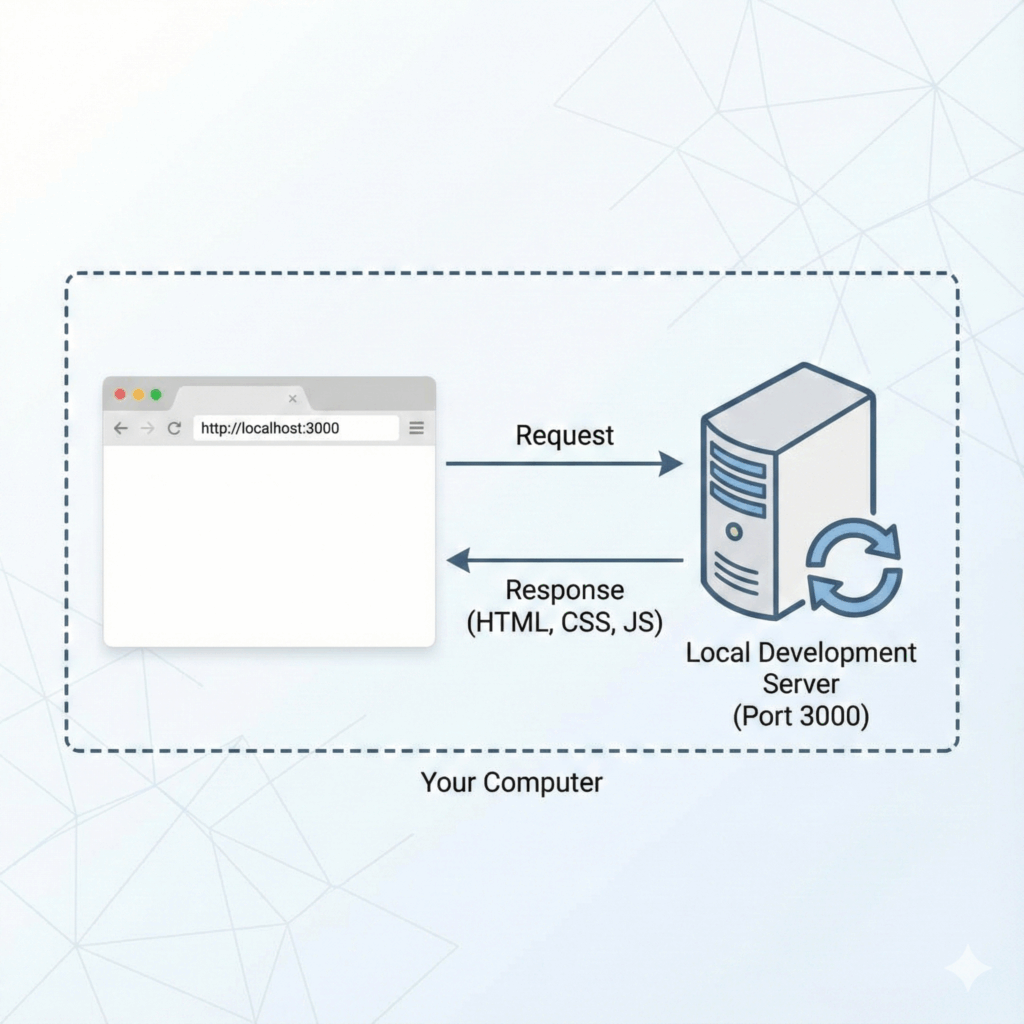Google Analytics is a powerful tool that allows developers to track user interactions on their websites and applications. It provides invaluable insights into user behavior, helping to improve performance and user experience.
A common misconception is that Google Analytics does not work on localhost. This belief can lead to missed opportunities for testing and refining analytics setup during development.
Key takeaway: This article will explore the truth behind using Google Analytics on localhost. You’ll receive a comprehensive guide to making it work effectively, ensuring your analytics setup is robust even before going live.
Understanding Google Analytics Functionality
Google Analytics is a powerful tool for tracking user interactions on websites. By embedding a tracking code into your site’s HTML, you can gather detailed data on how users engage with your content. This data includes page views, session duration, bounce rates, and much more.
Universal Analytics vs. Classic Analytics (Urchin Tracker)
There are two primary versions of Google Analytics:
- Classic Analytics (Urchin Tracker): The original version, often referred to as legacy analytics, used the
urchin.jslibrary. It has been largely phased out but is still supported for some older implementations. - Universal Analytics: The modern standard, utilizing the
analytics.jslibrary. This version brought significant improvements in data collection and processing capabilities.
Choosing the Right Tracking Library
Selecting the right tracking library is crucial for accurate data collection:
- analytics.js: Part of Universal Analytics, it offers enhanced features over its predecessor, including better session management and cross-device tracking.
- gtag.js: The latest global site tag provided by Google. It simplifies tagging across Google’s suite of products (including Google Ads and Firebase) by using a unified tagging approach.
When deciding between analytics.js and gtag.js, consider the following:
- For projects already using Universal Analytics, sticking with
analytics.jsmight be more straightforward. - If you’re looking for a more integrated approach across multiple Google services,
gtag.jsoffers a streamlined solution.
Understanding these components and making informed decisions about which tools to use will set the foundation for effective analytics tracking on your website.
Implementing Google Analytics on Localhost
Does Google Analytics work on localhost? Absolutely, it does. Many developers mistakenly believe that Google Analytics cannot be used in a local development environment, but this is not the case. Implementing tracking for localhost activity can be incredibly beneficial for testing purposes before your site goes live.
Step-by-Step Guide to Implement the Tracking Code Locally
1. Create a Google Analytics Account:
If you don’t already have one, sign up for a Google Analytics account. Navigate to Google Analytics and follow the prompts to create a new account.
2. Set Up a Property:**
Within your Google Analytics account, set up a new property specifically for your local development environment. This helps in keeping your data organized and separate from your production data.
3. Get Your Tracking ID:**
Once the property is created, you will receive a tracking ID (formatted like UA-XXXXXXXXX-X). Copy this ID as you’ll need it for the next steps.
4. Add the Tracking Code to Your Local Site:**
Insert the standard tracking snippet provided by Google into the <head> section of your HTML files:
html
Replace UA-XXXXXXXXX-X with your actual tracking ID.
5. Run Your Local Server:**
Ensure your local server is running. Open your browser and navigate to localhost or whichever local URL you are using.
6. Verify Tracking:**
Use browser developer tools to check network requests and confirm data transmission to GA servers:
- Open Developer Tools (usually F12 or right-click -> Inspect).
- Go to the “Network” tab.
- Refresh your page and look for requests going to
www.google-analytics.com. These indicate that data is being sent to Google Analytics.
Important Considerations
- Cookie Domain Settings: The
cookieDomainis automatically set to'none'when using Universal Analytics withanalytics.js, making it easier to track localhost without additional configuration. - Ad Blockers: Ensure that ad blockers are disabled while testing, as they can interfere with data collection.
Implementing these steps ensures that you can monitor and analyze how users interact with your website during its development phase, all within a localhost environment. This setup aids in identifying potential issues early on, providing a seamless transition when deploying to production environments.
By following these guidelines, you maintain a robust analytics framework even during local testing phases.
Configuring Google Analytics for Local Development
Configuring Google Analytics for local development involves a few specific steps to ensure accurate tracking and data collection. Here’s how you can set up your environment effectively:
Steps to Configure Google Analytics on Localhost
- Add the Tracking Code: Insert the standard Google Analytics tracking code into your website’s HTML. This is typically added before the closing
</head>tag. - html
- Adjust Cookie Settings: When using Universal Analytics, special attention must be given to the
cookieDomainsetting. This parameter ensures that cookies are correctly set even when running on localhost. - Set cookieDomain to ‘none’: By default, the
analytics.jslibrary will detect a localhost environment and set thecookieDomainto'none'. However, you can manually configure this if needed: - javascript ga(‘create’, ‘UA-XXXXX-Y’, { ‘cookieDomain’: ‘none’ }); ga(‘send’, ‘pageview’);
- Verify Implementation: Use browser developer tools to check network requests and confirm data transmission to Google Analytics servers.
Understanding cookieDomain Settings with Universal Analytics
The cookieDomain parameter plays a critical role in how Google Analytics collects data from local environments. When set to 'none', it tells the library not to tie cookies to any particular domain, which is essential for localhost setups where no fully qualified domain name (FQDN) exists.
- Impact on Data Collection: Without properly setting the
cookieDomain, data collection might fail or cookies might be incorrectly assigned, causing inaccurate analytics reporting. - Using gtag.js: If you’re using the newer
gtag.jslibrary, configuration remains straightforward but slightly different: - javascript gtag(‘config’, ‘YOUR_TRACKING_ID’, { ‘cookie_domain’: ‘none’ });
Setting up Google Analytics correctly for local development can save significant debugging time and ensure a seamless transition from local testing to live production environments.
Verifying Your Tracking Setup on Localhost
To ensure that your Google Analytics tracking setup is correctly configured on localhost, follow these simple steps:
- Open Developer Tools: Press
F12or right-click on your webpage and select “Inspect” to open the browser’s developer tools. - Navigate to Network Tab: Click on the “Network” tab to view all network requests made by your website.
- Filter Requests: Type
collectin the filter box to isolate requests sent to Google Analytics.
You should see requests like https://www.google-analytics.com/collect. If these requests appear, it indicates that your tracking code is firing correctly.
Additional Checks:
- Status Codes: Ensure that the status code of these requests is
200 OK, indicating successful transmission. - Payload Data: You can click on the GA request to view the payload data and verify it contains expected parameters such as
tid(Tracking ID),cid(Client ID), and event details.
By following these steps, you can confirm that your Google Analytics tracking setup is functioning properly on localhost, ensuring accurate data collection during development.
Common Challenges with Localhost Tracking and Their Solutions
Using Google Analytics on localhost is not without its challenges. One frequent issue developers face is ad blockers interfering with data collection. Ad blockers can prevent the tracking code from sending data to Google Analytics servers, leading to incomplete or missing analytics data.
Practical Solutions:
- Disable Ad Blockers: Ensure that ad blockers are turned off during testing phases. This guarantees that Google Analytics can transmit data without interruptions.
- Use Incognito Mode: Sometimes, browser extensions and cookies can interfere with tracking. Testing in incognito mode can help isolate these issues.
- Check Tracking Code Placement: Verify that the tracking code is correctly placed within your HTML files. It should ideally be in the
<head>section for better performance and accuracy. - Network Request Monitoring: Use browser developer tools (e.g., Chrome DevTools) to check if network requests are being sent to Google Analytics servers. Look for requests made to
www.google-analytics.comoranalytics.google.com.
Another common problem is data contamination from local development environments. Developers’ interactions with the site could clutter the analytics data, making it less reliable.
Solutions for Data Contamination:
- Exclude IP Addresses: Configure filters in your Google Analytics admin settings to exclude traffic from your local IP addresses.
- Conditional Tracking Code: Implement conditional statements in your code to prevent the analytics tag from running on localhost: javascript if (window.location.hostname !== ‘localhost’) { // Insert Google Analytics tracking code here }
By addressing these issues, you can maintain accurate and reliable analytics data during your development process on localhost environments.
Best Practices for Utilizing Google Analytics Locally without Compromising Data Quality
To ensure accurate and valuable analytics data while developing locally, consider implementing the following best practices:
1. Exclude Specific IP Addresses
Prevent your local development traffic from skewing your analytics data by excluding your IP address. This can be done in the Google Analytics admin settings by setting up filters to exclude traffic from specific IPs.
python // Example of excluding local IP in Google Analytics settings { “type”: “IP”, “operator”: “doesNotEqual”, “value”: “192.168.1.1” }
2. Use Separate Properties for Development and Production
Maintain distinct properties or views within Google Analytics for development/staging environments and the live site. This separation ensures that test data does not mix with production data, preserving the integrity of your analytics.
3. Conditional Tag Implementation
Implement conditional statements to only include the Google Analytics tracking code when accessed through a live URL. This approach minimizes unnecessary data collection during local tests.
javascript if (window.location.hostname !== ‘localhost’) { // Insert Google Analytics tracking code here }
4. Disable Ad Blockers
Ensure that ad blockers are disabled during testing, as they can interfere with Google Analytics scripts and skew data accuracy.
Adhering to these practices helps in improving analytics accuracy and ensures high-quality data collection even during local development phases.
Conclusion: Making It Work – The Verdict on Using Google Analytics with Localhost Setups
Does Google Analytics work on localhost? Yes, it does. By following the right configuration steps and best practices, developers can successfully leverage the power of GA in their local environments. Implementing the correct tracking code, configuring cookieDomain settings, and using real-time data tracking are essential steps.
Remember to:
- Exclude specific IP addresses to maintain clean data.
- Use browser developer tools to verify tracking setup.
Proper setup ensures that you can effectively test and refine your websites before going live, making Google Analytics an invaluable tool even during local development stages.




